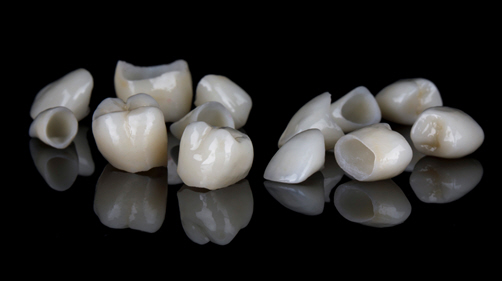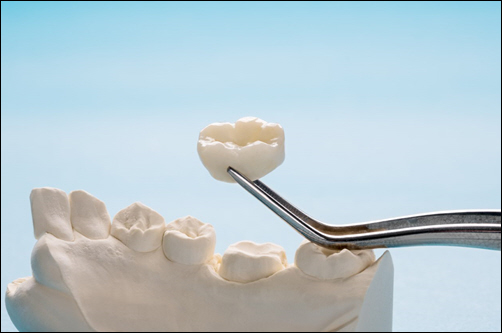Dental crowns are essential restorations that protect weakened or damaged teeth, improve appearance, and restore function. During the process of receiving a permanent crown, many patients first receive a temporary crown to protect the tooth while the permanent one is crafted. Understanding the differences between temporary and permanent crowns—and how to care for each—can help you ensure a smooth and successful treatment.
Temporary Crowns: A Short-Term Solution
 Temporary dental crowns are used to protect the prepared tooth while your permanent crown is being made. Made from materials like acrylic or composite, temporary crowns are not as durable as permanent crowns but serve as a crucial protective layer for the tooth. Dentists cement them in place with a weaker adhesive, making them easier to remove when it’s time to place the permanent crown. They protect the tooth from bacteria, sensitivity, and damage while allowing you to eat and speak normally. However, because they aren’t as strong as permanent crowns, they require extra care to avoid accidental loosening or damage.
Temporary dental crowns are used to protect the prepared tooth while your permanent crown is being made. Made from materials like acrylic or composite, temporary crowns are not as durable as permanent crowns but serve as a crucial protective layer for the tooth. Dentists cement them in place with a weaker adhesive, making them easier to remove when it’s time to place the permanent crown. They protect the tooth from bacteria, sensitivity, and damage while allowing you to eat and speak normally. However, because they aren’t as strong as permanent crowns, they require extra care to avoid accidental loosening or damage.
How to Care for a Temporary Crown
Caring for a temporary crown involves some simple precautions:
- Avoid Sticky or Hard Foods: Sticky foods like gum and caramel can pull the crown loose, while hard foods like nuts or hard candy may crack it. Stick to softer foods and avoid chewing on the side with the temporary crown as much as possible.
- Brush and Floss Carefully: Maintain good oral hygiene, but be gentle. When flossing, slide the floss out rather than pulling it up to avoid dislodging the crown. Use a soft-bristled toothbrush to gently clean around the area without irritating the gums.
- Skip Chewing Gum: Gum can loosen or pull on a temporary crown, so avoid it until you receive your permanent crown.
Following these steps helps keep the temporary crown secure and your tooth protected until it’s time for your permanent restoration.
Permanent Crowns: A Lasting Solution
Permanent dental crowns are custom-made to fit your tooth precisely, offering strength, stability, and a natural appearance. They are crafted from durable materials like porcelain, ceramic, metal, or a combination, providing years of protection and function. Once cemented, permanent crowns are designed to withstand daily wear and tear, allowing you to eat, speak, and smile confidently.
How to Care for a Permanent Crown
Caring for a permanent crown is similar to caring for natural teeth, but with a few extra considerations:
- Maintain Good Oral Hygiene: Brush twice daily and floss regularly to keep your crown and surrounding teeth healthy. Flossing around the crown prevents plaque buildup and keeps the gum tissue healthy.
- Avoid Excessive Pressure: While permanent crowns are durable, chewing on ice, hard candies, or using teeth as tools can still cause damage. Avoid biting down on hard objects to prolong the lifespan of your crown.
- Schedule Regular Dental Checkups: Visit your dentist regularly to ensure the crown stays in good shape. Regular exams allow your dentist to check the fit, health of the surrounding teeth, and address any issues early.
- Watch for Grinding: If you grind your teeth, consider wearing a nightguard to protect both the crown and your natural teeth from excessive wear.
Protecting Your Investment
Temporary and permanent dental crowns both play vital roles in restoring and protecting your smile. By caring for each type properly, you protect your investment and maintain a strong, healthy smile for years to come. Temporary crowns provide necessary short-term protection, while permanent crowns offer a durable, lasting solution. With mindful care and regular dental visits, you can ensure your crown functions well and keeps your smile looking its best.

